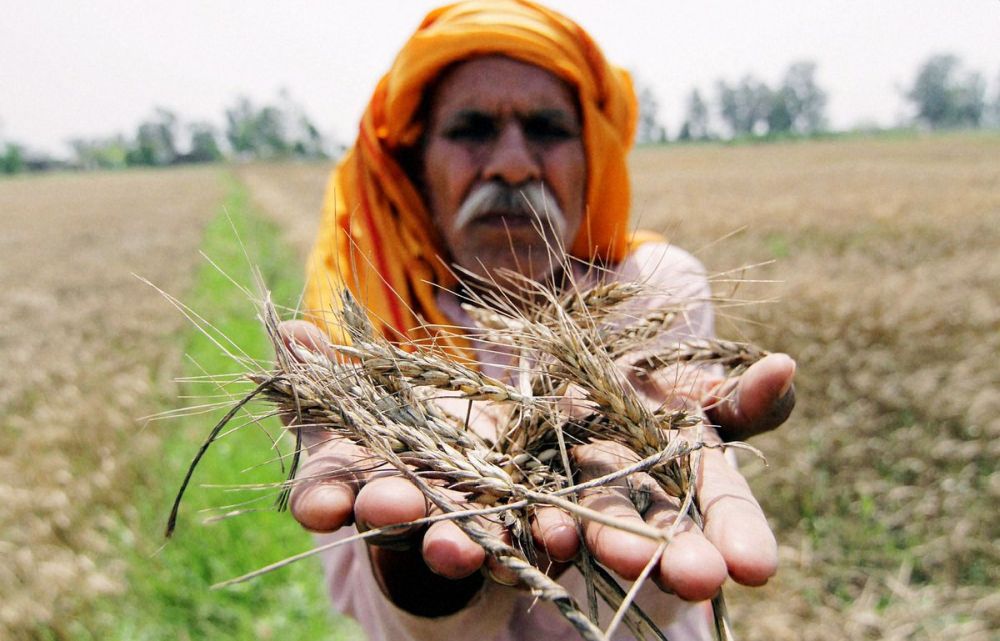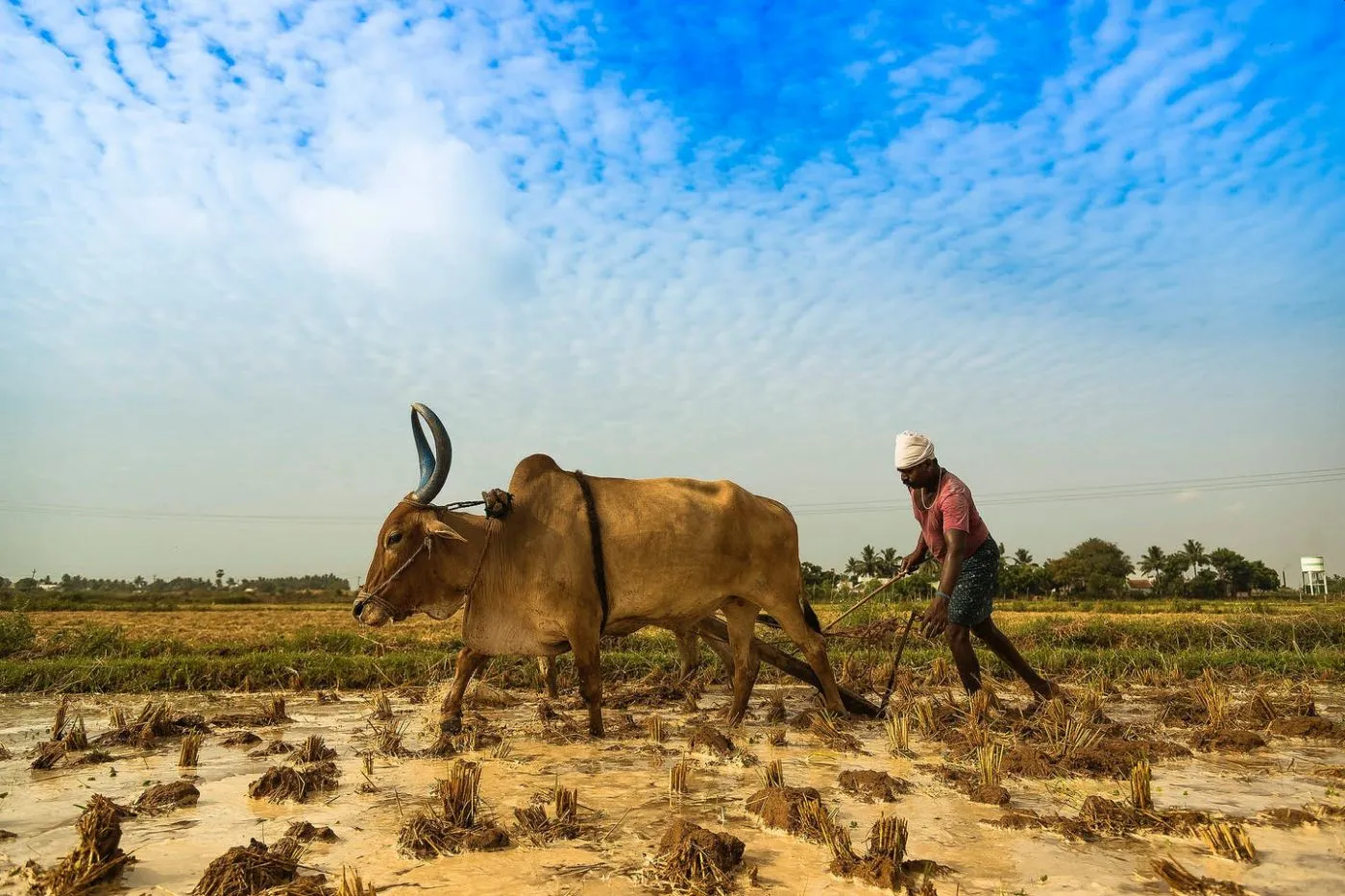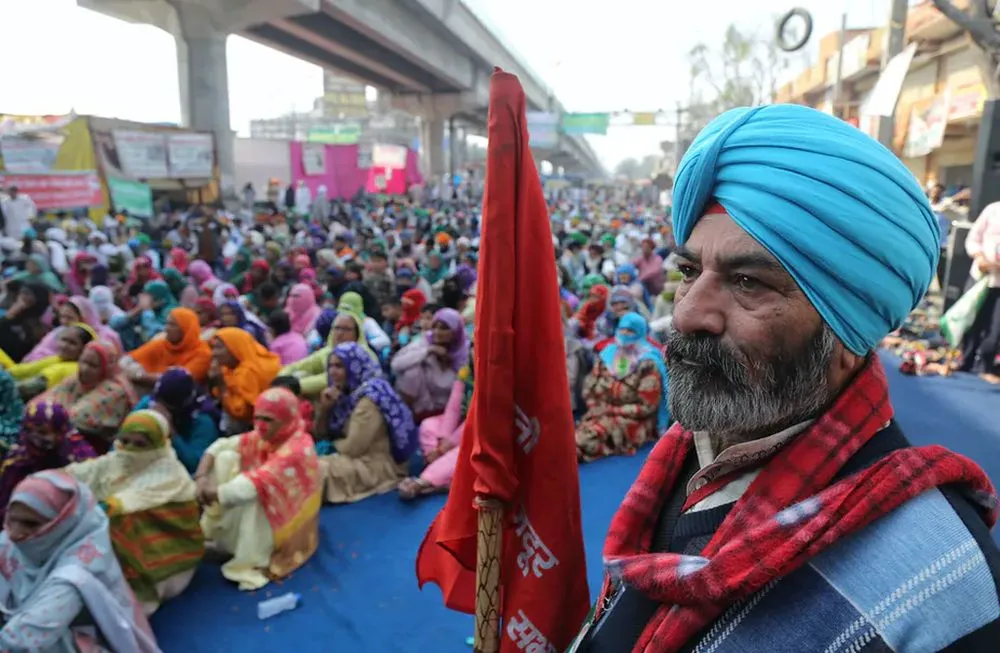Daunting Tale of India’s Food Security, Climate Change and Plight of the Farmers
Providing food security to over 1.3 billion people is not an easy task and climate change has added to the enormity of India’s food security challenges. Moreover, in these uncertain times of changing climatic conditions and ever-emerging health crises such as the current coronavirus pandemic, it has become evident that there is a direct relation between planetary health and human health.
One of the main contributors to India’s economy is agriculture. It accounts for 26 percent of the GDP, ensures food security for the country, and produces several raw materials for industries – making agricultural development a precondition to the country’s overall growth. However, the condition of Indian agriculture and Indian farmers has always been pitiful.
Akin to the rest of the world, the weather has become unpredictable these days in the Indian subcontinent as well. With shifting precipitation patterns, increasing urbanization, groundwater depletion, fading springs, and land-use changes are threatening the food security of citizens and livelihood of Indian farmers.
India’s Dwindling Food Security and Rising Hunger
India retains the dubious distinction of being the country with the largest population of food-insecure people. According to the data from the latest editions of the State of Food Security and Nutrition in the World (SOFI) report, the prevalence of food insecurity increased by 3.8 percent in India between 2014 and 2019, which was the first term of the Narendra Modi government. By 2019, 6.2 crores more people were living with food insecurity than the number in 2014.
Various studies and analysis have noted that global food security is threatened by climate change. According to one report, yields of major crops could decrease by up to 25 percent. An IPCC report also warned that in coming years food security will face peril due to changing climatic conditions coupled with increasing demands of the rising population.

The changing climate is destroying the quality of crop yields | Image: The Wire
Despite the good economic performance and increasing GDP, with over 200 million people who are food insecure, India is home to the largest number of hungry people in the world. Besides, the population of India is projected to increase uncontrollably within the next three decades, which would make it nearly impossible to provide nutrition and food security to all of its citizens.
What’s even scarier is that India doesn’t have enough to feed its people even at the present. Many Indians have fallen prey to hunger and malnutrition, mostly due to poverty, and annually many lose their lives to starvation. In 2018, India reported 8,82,000 deaths of children below five years due to malnutrition.
Despite several efforts, India’s agricultural productivity is in danger of getting severely impacted. Issues such as greenhouse gas emissions, increased frequency of extreme weather outcomes, average annual temperature taking a northward shift, and rising seawater levels are merely a few of the factors that could adversely affect India’s food security.
Even after a decisive mandate, the government is still not confident on which course to tread to ensure food security for every citizen. The sense of urgency, shown to address the slowdown in the economy, in general, has not translated into dealing with the challenges of agriculture.
Effects of Climate Change on Indian Agriculture
Agriculture in India is highly susceptible to fluctuations in temperatures, excessive and untimely rains, floods, droughts, pests, diseases, and so on. In recent times, such extreme events have been aggravated by climate change, hence altering the agrarian scenario of the country of 1.3 billion people.
Rising temperatures affect flowering and lead to pests and disease buildup. Flood and excess rain over a short duration of time cause excessive damage to crops. Extreme weather events have caught the attention of agrarian experts and scientists alike and they are now focusing on natural farming to diminish the effects of climate change.
Much of India’s agriculture still depends on rainfall rather than canals, wells, and tube wells, which means that the crop yield of a short growing season of 2.5 to 6 months is entirely dependent on the ever-shifting rainfall patterns. Even the well-irrigated region in the north-west and south-east where the 1960s green revolution massively increased yields are now experiencing groundwater depletion.
As Indian agriculture remains largely dependent on monsoon with around 52 percent of the agricultural land non-irrigated, the agrarian sector has been left uninsured against the vagaries of the weather. The pattern of the Indian monsoons is anticipated to change in the next decade both spatially and temporally with an alteration in arrival and departure times, increased intensity of rainfall as well as larger breaks between bursts are also expected.

Indian agriculture is highly susceptible to fluctuations in temperatures, excessive and untimely rains, floods, droughts, pests and diseases | Image: Well-Bred Kannan/WBK’s Photography
The situation is particularly bad in Central India, which is the primary agricultural region of the country. Central India predominantly produces high water-intensive crops such as rice, wheat, and sugarcane. While rice and wheat are major crops with the highest area under cultivation, Maharashtra has the highest area under cultivation for jowar and cotton. The worsening water availability is significantly affecting crop yields.
Deforestation and soil erosion make matters further worse. India loses 15 tonnes of soil per hectare each year, eroded away by wind or water. With agro-biodiversity in decline as only a handful of strains of a few crops have come to dominate also threatens the food security in India.
Climate change affects all three aspects of food security: availability, access, and absorption. When production decreases, the availability of food decreases. Changing climatic patterns affect the poor and the marginalised communities the most, as they don’t have the resources to buy the food at inflated prices, affecting their access to it.
The “Global Risks Report 2020” published by World Economic Forum lists climate change as the top global threat over the next decade; while the Global Climate Risk Index places India at the 5th position amongst the nations that are most vulnerable to climate change crisis.
These days, India is witnessing a historic mass mobilisation of farmers against three new farm laws, which according to the government are the cure for a longstanding agrarian crisis. But while these laws have been studied and analysed from several angles to prove their benefits, the environmental angle has been yet again ignored. The agrarian crisis in India is fueled by strong environmental vulnerabilities including those related to climate change, and ultimately affecting the lives and livelihood of the farmers of the Indian subcontinent.
The Plight of Indian Farmers
Indian farmers have always been in a pitiful condition – be it under the rule of various monarchs throughout history, British colonisation, or in the current democratic rule. Under British rule, the condition of Indian farmers and Indian agriculture deteriorated rapidly. The contemporaneous land revenue policies oppressed the peasants heavily. In order to meet the high demand of revenue, the peasants perpetually remained indebted to the local money-lenders, to whom many lost their lands when unable to payback.
Moreover, the policy of commercialisation of agriculture by the British encouraged market-oriented production of cash crops such as opium, tea, coffee, sugar, jute, and indigo. The farmers were forced to grow these crops, were provided minimum wages to go by their lives, and these crops over-exploited the fertile lands, leaving them unable to grow any other crops. High revenue demands led to devastation, as it led to poverty and the deterioration of agriculture in the 19th century.

A large number of women have joined the protests against new farm laws in India | Image: Sanchit Khanna/Hindustan Times
Not much has changed since then – about 80 percent of the farmers are marginal or small farmers, many are still indebted, they don’t get enough to get by their lives, and to escape the depressing realities of being a farmer in India many commit suicide every year. Every day, there are reports of Indian farmer suicide from different parts of the country, while people sitting in air-conditioned rooms are formulating policies to rectify the problems they don’t even fully comprehend.
Furthermore, the changing climate is exacerbating the condition of Indian agriculture and Indian farmers. For instance, too much rain or drought will destroy crops, or even if everything is good and the productivity is still low, then the price will be low.
Urban consumers who are used to get the best media attention would protest if food prices rise, but they are incapable of understanding the problems that the farmers are facing every day. For example, 100 Rs. per kg for any food product becomes instant breaking news, but when onion drops down to 1 Rs. per kg, no one cares.
It is extremely sad that every year over 10,000 Indian farmers take their own lives; because apparently, dying seems a lot easier to them than being a farmer in India. Maharashtra, Karnataka, Andhra Pradesh, Chhattisgarh, and Telangana have accounted for over 80 percent of the suicidal deaths in the farming sector recently.
Dark Times Ahead
While the farmers still continue to protest against the new farm bills, the government is adamant to implement these laws to eradicate the agrarian crisis. But, many are asking will it work or will it just increase the exploitation of Indian farmers?
Anyhow, be that as it may, it seems that Indian agriculture has some dark times ahead. With changing climate and shifting rainfall patterns and invasive species deteriorating the seed quality, the agricultural scenario is sure to go under a major change.
It is imperative that policymakers understand the pitiful conditions the Indian farmers have been living in, and amend the laws while keeping their benefits in mind. It is extremely stupid that without knowing the realities and difficulties of being a farmer in changing climatic conditions, the policymakers are the ones responsible for making decisions for the farmers.
The Indian agricultural sector is not going to survive unless the government works with the farmers in the utmost harmony and supports them. The suicidal tendency among the farmers has to go away – they feed a nation with their hard work and they should not suffer like this. Besides, the changing climate is not making things any easier; therefore, some serious work needs to be done.


